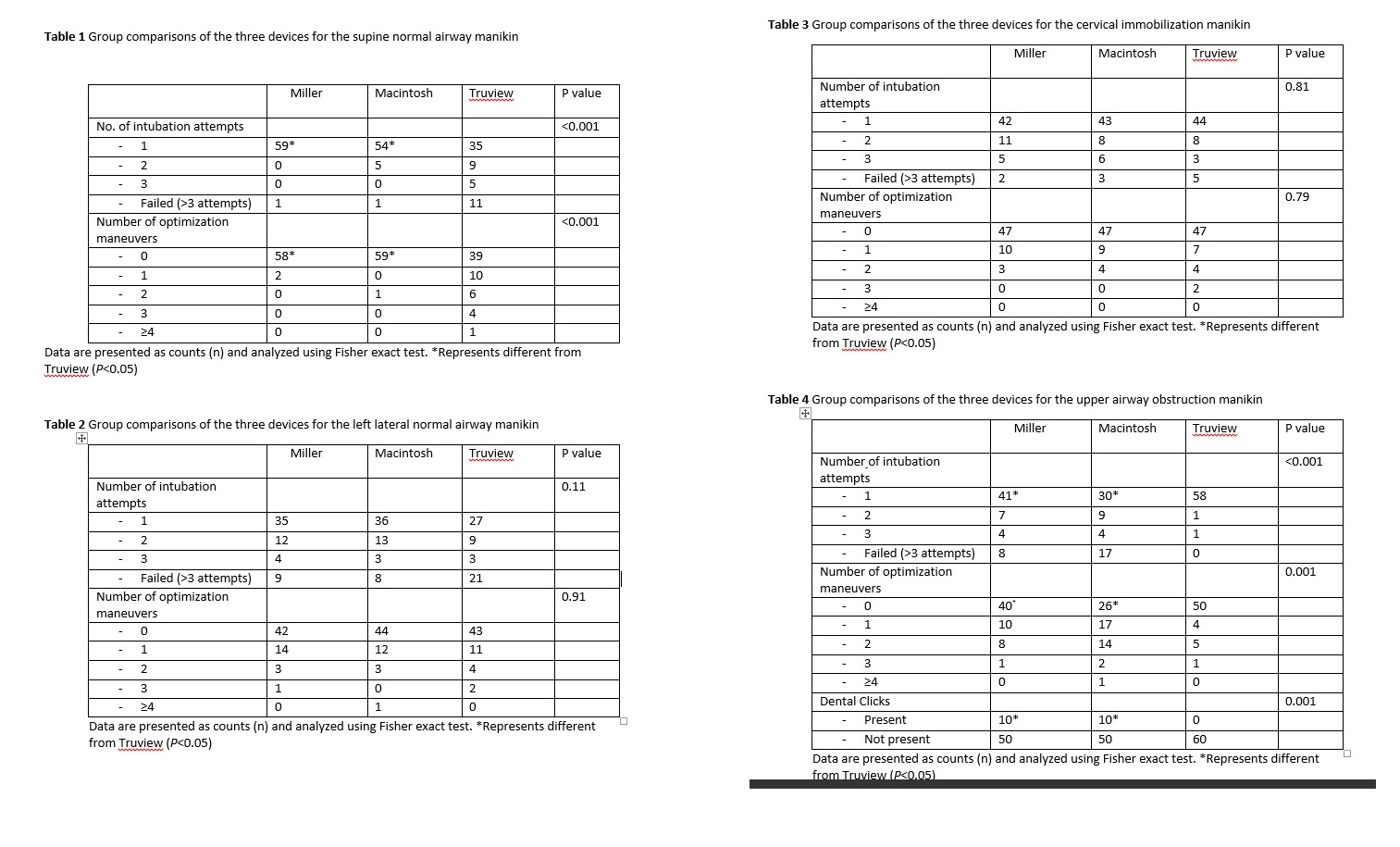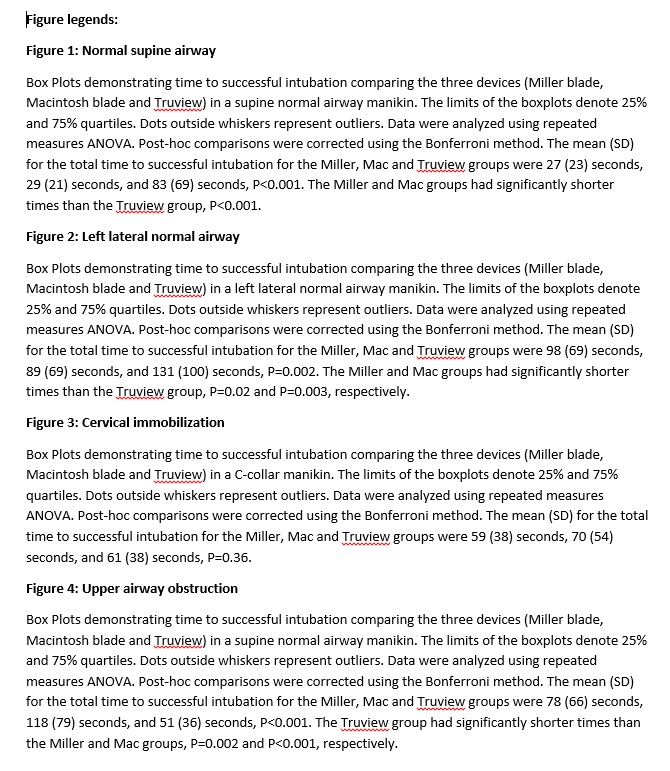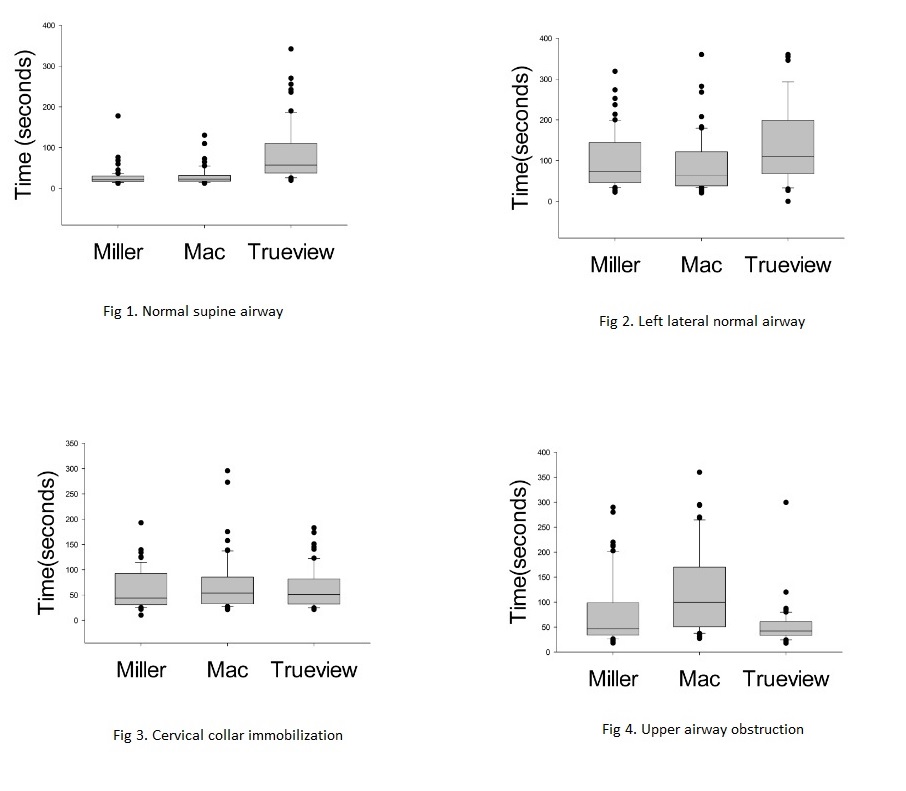AET-29
A randomized comparison of the Truview videolaryngoscope with the Macintosh and Miller laryngoscopes, when used by novice laryngoscopists, in normal and difficult airway scenarios on pediatric manikins
1Huang A, 1Jagannathan N, 2Moehrle N, 3Jagannathan R, 1Hajduk J, 2De Oliveira G, 1Pardesi O
1Ann and Robert H. Lurie Children’s Hospital of Chicago, Chicago, IL, USA; 2Northwestern University Feinberg School of Medicine, CHicago, IL, USA; 3Rush University Medical Center, Chicago, IL, USA
Introduction: Inexperience with laryngoscopy can lead to a higher incidence of failed tracheal intubations. Testing novices may provide some insight to airway management given the variable levels of clinician experience. We therefore compared the Truview videolaryngoscope with Miller and Macintosh laryngoscopes in novice operators intubating normal and difficult airway pediatric manikins. We hypothesized that the novice operators would intubate faster with the Truview than the Miller and Macintosh in all scenarios..
Methods: Sixty medical students were enrolled in a randomized crossover study and assigned an order of three blades in the following sequence: supine normal airway, left lateral normal airway, cervical-collar immobilization, and upper airway obstruction. Time for successful tracheal intubation, number of attempts, subjective ease of use of the device, grade of laryngeal view, and the number of optimization maneuvers needed were assessed.
Results: In the supine normal airway scenario, time for successful intubation (mean (SD) seconds) was significantly longer with the Truview (83 (69) s) than the Miller (27 (23) s) and Macintosh (29 (21) s; p < 0.001) laryngoscopes; and required more optimization maneuvers (p < 0.001). In the upper airway obstruction scenario, time for successful intubation was significantly shorter with the Truview (51 (36) s) than the Miller (78 (66) s) and Macintosh (118 (79) s) laryngoscopes; and required fewer optimization maneuvers (p < 0.001).
Discussion: In the normal airway manikin, novices performed poorly using the Truview VL when compared with the Miller and Macintosh laryngoscopes. However, in the difficult airway obstruction scenario, novices performed tracheal intubation faster with the Truview VL when compared with DL. The Truview consistently provided an equal or superior view of the glottis in all four manikin scenarios, but did not always translate into faster intubation times or higher success rates. Our findings support the results in other pediatric studies comparing the Truview with DL and a meta-analysis comparing various pediatric VL’s with DL.
Conclusion: The results support our hypothesis in only the pediatric airway obstruction manikin scenario.
References:
Canadian Journal of Anaesthesia. 2013; 60: 450–7.
Paediatric Anaesthesia. 2014; 24: 1056–65.
Top














